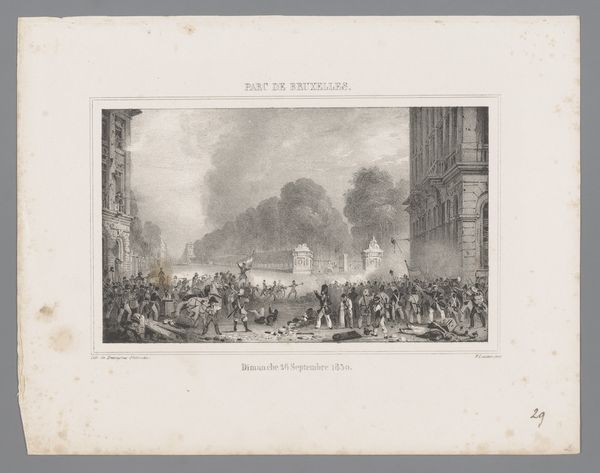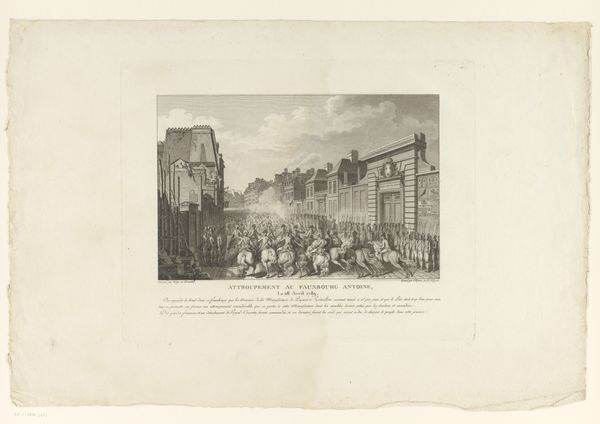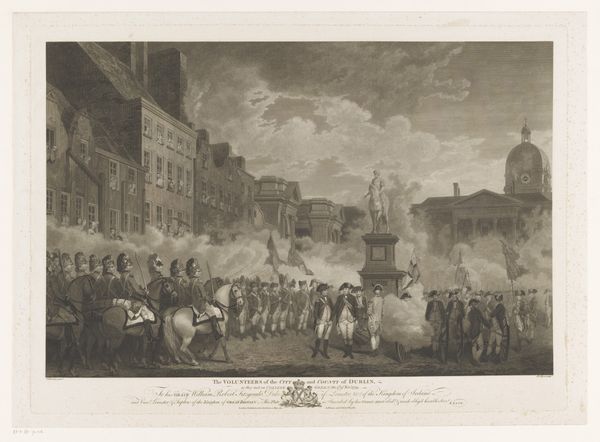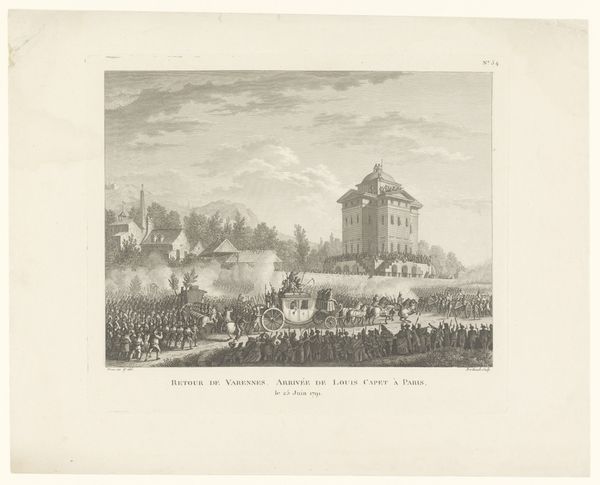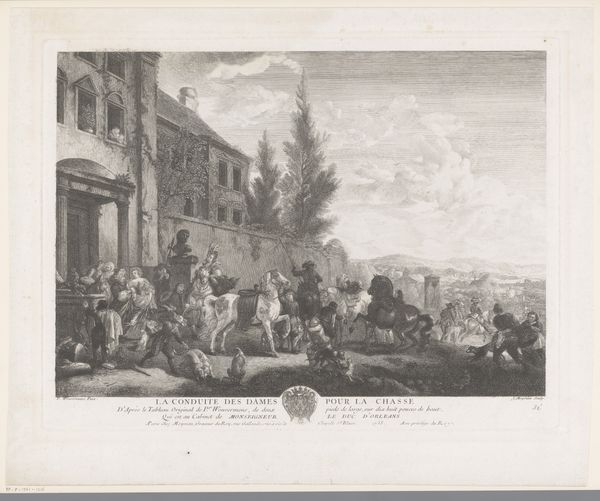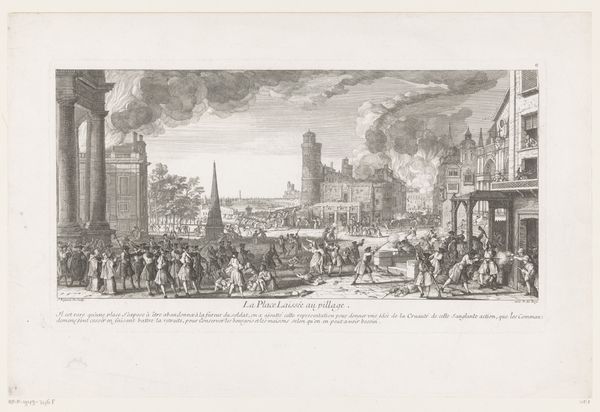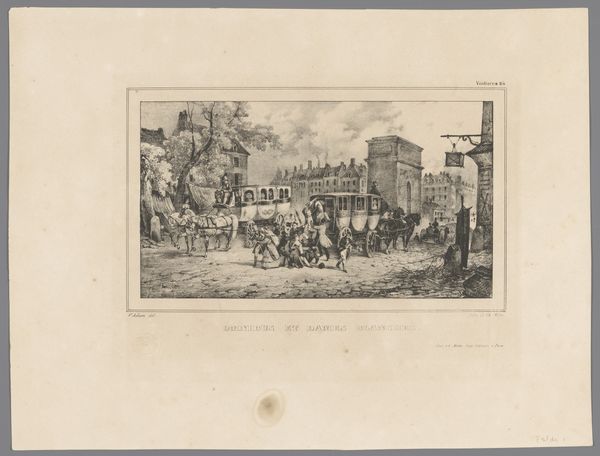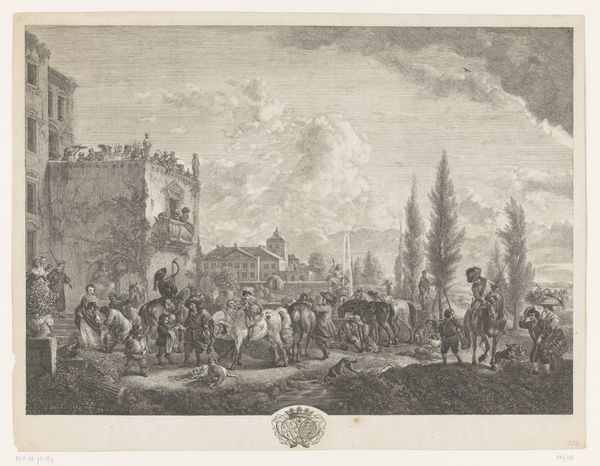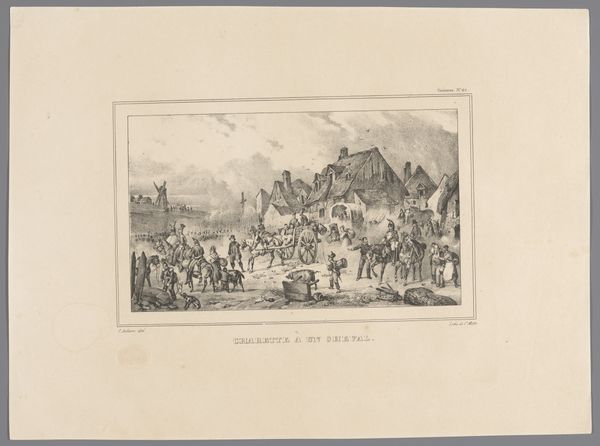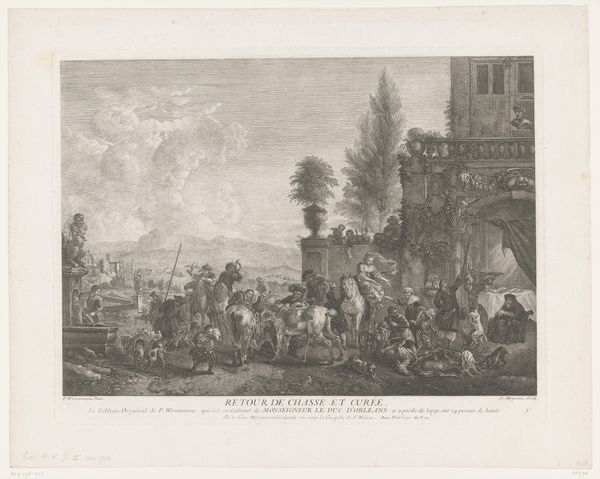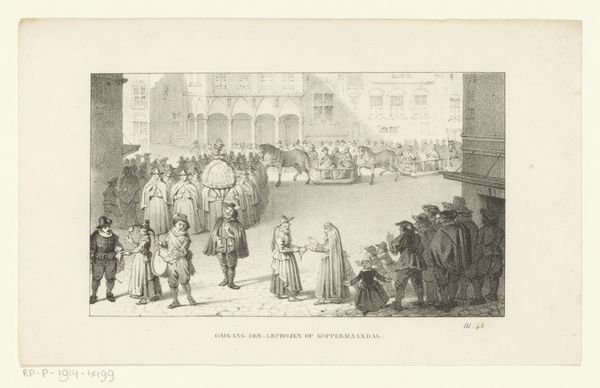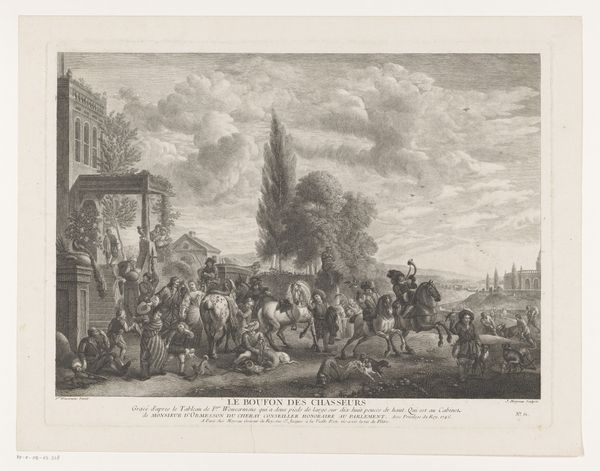
print, engraving
# print
#
war
#
romanticism
#
cityscape
#
history-painting
#
engraving
Dimensions: height 317 mm, width 384 mm
Copyright: Rijks Museum: Open Domain
Curator: This print by Juan Galvez, created between 1808 and 1814, is entitled "Aanval bij de Puerta de Sancho in Zaragoza", which translates to "Attack at the Sancho Gate in Zaragoza". It's an engraving depicting a scene from the Peninsular War. Editor: My first impression is one of organized chaos. Despite the grim subject matter, there's a strange order to the composition. The receding lines of the architecture juxtapose dramatically with the active human figures and plumes of smoke from cannon fire. Curator: The print offers insight into the political imagery and public role of art during that era. Notice how Galvez positions the defenders, highlighting the bravery and civilian resistance against the French. Consider how this imagery was used to rally support for the Spanish cause. Editor: I agree. It is a heavily romanticized depiction, isn't it? War is often depicted as masculine and honorable but this seems to focus more on its civilian impacts and disruptions, emphasizing national identity over other considerations. I think about the intersectional impacts of war here. Curator: Absolutely. The social history here is key. The choice to depict armed citizens fighting for their city is a clear attempt to create a narrative of patriotic unity and resilience. We need to remember how institutional structures, such as printmaking, aided in disseminating particular political agendas. Editor: Thinking of romanticism, this romanticized vision probably appealed strongly to nationalism—then, and potentially even now. Who are the unsung heroes in these accounts of the Peninsular War? Do the prints represent a fully honest portrayal, or an intentional visual agenda? Curator: The piece underscores how art serves as both a historical document and a piece of propaganda. The power dynamics inherent in image-making and dissemination always must be considered. Editor: Considering it all, Galvez has offered us a snapshot that opens up avenues for discourse on how representations of conflict can bolster, or complicate national and gender identity, while also considering the effects that institutions have on shaping what is considered the face of ‘resistance’.
Comments
No comments
Be the first to comment and join the conversation on the ultimate creative platform.
